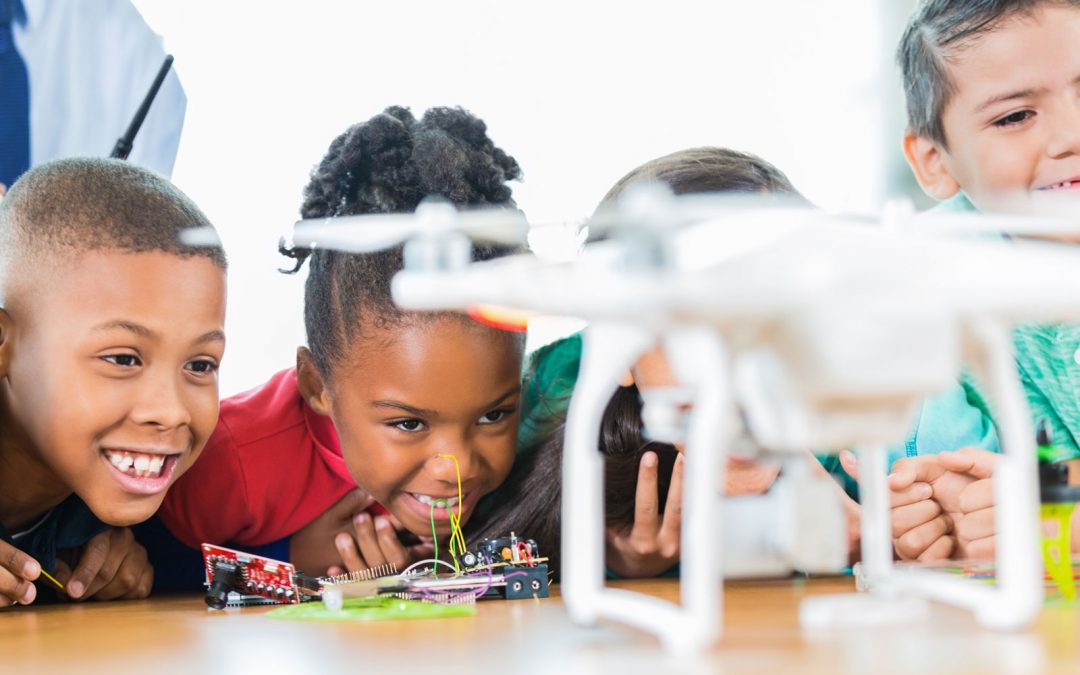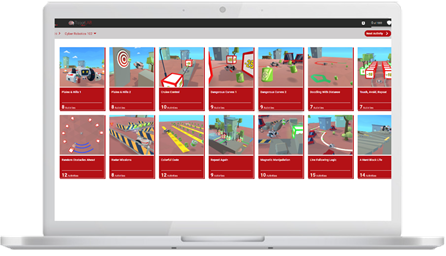Science, technology, engineering, and math (STEM) subjects are integral to our contemporary way of life. A significant amount of our day-to-day activities involve advanced technology to some degree. As a result, many of our industries have become reliant upon tech solutions, meaning that STEM-proficient workers are essential.

STEM learning from an early age is vital to ensure that students are equipped to meet the needs of the world they’ll inherit. We now have some incredible, inexpensive tools at our disposal to keep students engaged and passionate about these subjects. Drones stand out as a fun and practical apparatus for class projects, experiments, and exploration.
We’ll take a look at a few of the ways in which drone technology can be incorporated into STEM education. Beyond some of the seemingly obvious, we can use them intelligently to enhance learning, engage passions, and demonstrate STEM as a force for good in the world.
By Luke Smith
Understanding the Tools
From a technological and engineering perspective, unmanned aerial vehicles (UAVs) are an excellent way to introduce STEM students to building and maintaining technology. Drones have various component parts, each of which can often be replaced, modified, and customized to meet the user’s needs. This means that students have the chance to get some hands-on learning experience in design, manufacturing, and piloting.
Looking at the types of drones available is a great introduction. Some of the students will be familiar with beginner drones targeted at kids; they perform a variety of basic photographic and aerial maneuvers and have limited customizability. However, this is an opportunity to also examine the UAVs that hobbyists, professionals in specific industries, and the military engage with. You can show students what elements of the design of military drones make them fit for long-distance flights. You can also give kids a demonstration of how the number of rotor blades a drone has can change how effective it is in difficult-to-navigate areas.
This is where educators can bridge ideas with reality. Provide classes with the opportunity to assemble and customize a drone. The students can also remove the component parts — rotors, batteries, cameras, motors, landing gear — and discuss how these objects might be changed, replaced, and altered for different circumstances. Older high school and college students can use computer-aided design (CAD) software to construct new propellers as part of a project to optimize the drone for a specific purpose. They can then create the propellers using a 3D printer, connect those propellers to a drone, and examine their effectiveness.
Demonstrating Theory
The “theory” aspect in STEM fields is fascinating and a testament to the creativity of human thought. However, purely theoretical discussions are not always understood by students. Teachers should support theory with demonstrations and experiments. STEM fields are inspiring, and we need to take advantage of the full range of opportunities at our disposal!
Drones in action help to demonstrate the effects of a variety of STEM principles. For example, the physics behind vertical takeoff and propeller aerodynamics are immediately visible and much more understandable once the rotor blades start to spin. Students can see how the shape of rotor blades enables downward airflow and causes the upward airflow to lift the vehicle into the sky. This can lead to lessons about forces such as how the balance of thrust, weight, and gravity helps the drone to hover.
Schools can also teach kids how to test the predictive elements of theoretical physics using UAV technology. Students should use mathematics to predict how long it will take the drone to travel between specific destinations, taking into account elements and obstacles such as wind conditions. They can then have fun testing their predictions by flying the drone through obstacles and gain a deeper understanding of theoretical lessons.
As Part of Everyday Life
Relating STEM subjects to how they feature in our lives is always useful. Teachers can give students the opportunity to understand how they enable us to thrive as a society and empower us to make changes. Exploring the diverse uses of drones can help demonstrate that STEM is valuable beyond the obvious industries and truly touches people’s lives.
Maintaining animal welfare is among the many new applications of UAVs. Drones are being equipped with thermal sensors and night vision tech to monitor areas that are popular operating grounds for poachers. These devices are also crossing into niche STEM fields like meteorology. Additional sensors are fixed to UAVs and then flown through storms. This shows students how drones gather important data and also introduces them to an exciting career opportunity.
Educators should also go further than showing how STEM subjects cross-pollinate into other fields. Students need to learn how these tools and ideas are changing lives every day. For example, drones are being used to transport vital blood transfusion supplies to hospitals in rural areas of Africa. They are also being used following natural disasters to survey hazardous locations for missing or injured people and then being used to strategize rescues.
Conclusion
An increasing number of our day-to-day activities rely on STEM. By using drones in schools, students can gain a deeper understanding of how these subjects touch various aspects of their lives. They get to appreciate the technology involved, witness practical demonstrations of complex theory, and recognize how advanced ideas have a role to play in improving our world.
Keep learning during COVID-19 with RobotLAB and CoderZ!

CoderZ is an online educational environment that improves students 21st century skills, while they are having fun programming their own virtual cyber robot. CoderZ and RobotLAB has different lessons to do at home! Check them out Here

